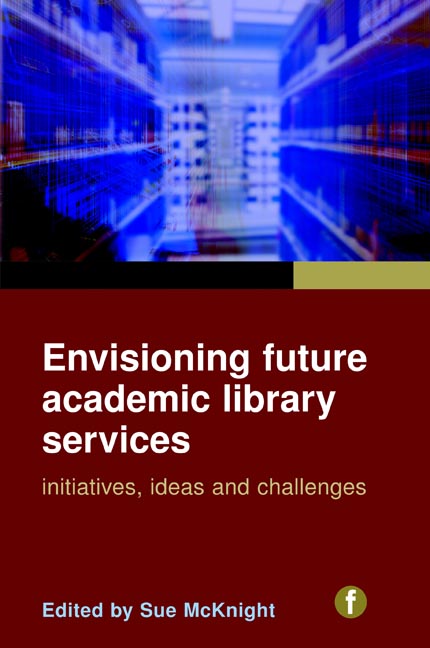Book contents
- Frontmatter
- Contents
- Foreword
- Contributors
- Introduction: We create the future!
- 1 Waiting for the barbarians: seeking solutions or awaiting answers?
- 2 The delete generation: how citizen-created content is transforming libraries
- 3 Libraries as places: challenges for the future
- 4 Web 2.0: redefining and extending the service commitment of the academic library
- 5 Second Life and libraries: boom or bust?
- 6 Some new business ideas in the HSS publishing space: what may librarians expect?
- 7 Loosely joined: the discovery and consumption of scholarly content in the digital era
- 8 Knowledge management, universities and libraries
- 9 Libraries and the management of research data
- 10 The leadership of the future
- 11 Adding value to learning and teaching
- 12 In search of the road ahead: the future of academic libraries in China
- Index
10 - The leadership of the future
Published online by Cambridge University Press: 08 June 2018
- Frontmatter
- Contents
- Foreword
- Contributors
- Introduction: We create the future!
- 1 Waiting for the barbarians: seeking solutions or awaiting answers?
- 2 The delete generation: how citizen-created content is transforming libraries
- 3 Libraries as places: challenges for the future
- 4 Web 2.0: redefining and extending the service commitment of the academic library
- 5 Second Life and libraries: boom or bust?
- 6 Some new business ideas in the HSS publishing space: what may librarians expect?
- 7 Loosely joined: the discovery and consumption of scholarly content in the digital era
- 8 Knowledge management, universities and libraries
- 9 Libraries and the management of research data
- 10 The leadership of the future
- 11 Adding value to learning and teaching
- 12 In search of the road ahead: the future of academic libraries in China
- Index
Summary
The slot in culture that I'm most closely associated with is one in which charlatans declare that they know the future. My job is to sit near that slot and when people approach me I say, ‘Only charlatans say they really know the future’.
William Gibson (2007)Introduction
We live in an age of uncertainty and widespread turbulence, where ‘the rate of change is the biggest change’ we face (Brockman, 2004), yet where our ability to predict and prepare for the future has never been more important to the survival of our organizations and our endeavours.
Whoever can most accurately predict the future can create a future ready workforce, adapt organizational systems, reconstruct processes that interface better with clients and stakeholders, and generally rethink their product, their production methods, their supply chain, their mode of product delivery and their product marketplace before their hungry competitors. Strategic and operational innovation is a key to competitive success in the 21st century: effective creation and leadership of the cultures that create innovation are vitally important. This applies in an academic library context as well as in the commercial sector.
Leaders need to anticipate the future. As well as helping us to prepare for the future, this type of focus helps us to make sense of the present: ‘A global futures perspective can help leaders make sense out of the chaotic patterns of change in the external world’ (Johansen, 2009). Yet Kouzes and Posner (2009) comment that being forward looking is the one leadership competence that leaders today are least capable of demonstrating. We must rectify that. Leading with an eye firmly fixed on the future, ‘future watching’ for new ideas, directions, trends, inventions and models, must become a thoroughly widespread capability, practised continually across the organization through every means possible, if organizations are to compete and innovate successfully.
Many of the innovations of the future are visible in the green shoots of the present. For some proactive, far-sighted organizations, new forms of leadership are already here; for most, they will be here within the next 5–10 years, for as the visionary writer William Gibson famously commented, ‘the future is already here – it's just not evenly distributed’ (Gibson, 1999).
- Type
- Chapter
- Information
- Envisioning Future Academic Library ServicesInitiatives, ideas and challenges, pp. 169 - 196Publisher: FacetPrint publication year: 2010
- 1
- Cited by

